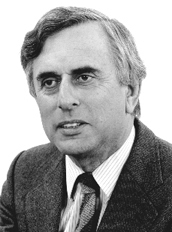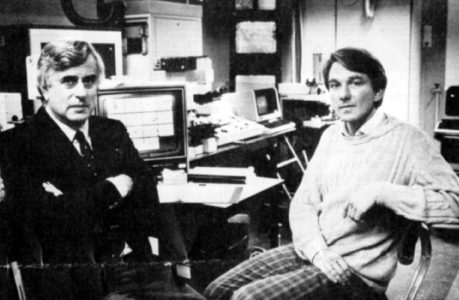Home Cytometry History Individual Histories Bas Ploem

Bas Ploem

Professor Ploem is renowned for his research in fundamental light microscopy, especially his leadership in fluorescence microscopy. He developed the first four-wavelength vertical fluorescence illuminator for excitation with a choice of narrow-band ultraviolet, violet, blue or green illumination. This epi-illumination instrument was first marketed for general fluorescence microscopy by Leica under the trade name “Ploem-opak.” The Ploem four wavelength epi-fluorescence illumination systems quickly became a standard for all major optical microscope manufacturers. Today, it is the dominant fluorescence microscopy technology. It is widely used in medicine, biology, and industry. This development significantly contributed to progress in cellular immunology and chromosome genetics. Later he developed, together with Leica, an improved optical design for reflected light microscopy for use in the biological and medical sciences. He proposed the name “Reflection-Contrast Microscopy” for this optical system. This microscope system produces images with very high definition and is successfully applied to thin sections in Immuno-cytochemistry applications. Professor Ploem’s collaboration with Leica also lead to a new instrument for correlative microscopy of the same specimen with fluorescence microscopy and scanning electron microscopy (1977). In this instrument, a fluorescence microscope system was built into the vacuum chamber of a scanning electron microscope, permitting simultaneous observation of the same specimen With LM and SEM. The early development of computer-operated microscopes was also advanced by Professor Ploem’s significant contributions. For automated image analysis of cervical specimens, a new fully-automated computer-operated microscope, the AUTOPLAN, was developed by Leica in collaboration with Professor Ploem. By combining automated microscopes with image analysis software developments, Ploem and his team catalyzed development of several commercial systems for automated cytology. With his coworkers at Leiden University, one of the first systems for automated cervical cytology screening (LEYTAS) was developed in collaboration with Leica and the Institute for Mathematical Morphology (Fontainebleau, France). In a collaboration with Zeiss, a laser scanning fluorescence microscope was tested as early as 1980.

Bas Ploem and Hans Tanke in front of the Leytas system, developed by Bas for automated cervical screening. The next picture is the prototype of the first epi-illumination fluorescence microscope that he developed in Amsterdam in the sixties (publication in 1967; Leitz Mitteilungen). The two others are prototypes of the epi-systems, with the dichroic mirror shifted in the pathway.
Johan S. Ploem is Professor Emeritus at Leiden University, the Netherlands. He is a graduate of Utrecht University, the Netherlands, receiving an MD in 1972. He worked as Intern in the Broussais Hospital (Paris, France) with Professor Pasteur Valery-Radot. In 1963, Dr. Ploem was elected a Fulbright Fellow for Study at the Harvard University School of Public Health, receiving a Master of Public Health degree Cum Laude in 1954. He obtained a Ph.D. degree in 1967 from the University of Amsterdam, the Netherlands. Professor Ploem has served as visiting lecturer or professor at various universities: Dundee. Scotland; University of Florida, USA; Monash University, Melbourne, Australia; University of Beijing, China; and at the Free University of Brussels, Belgium. In 1980, he was appointed to a professorship in the Department of Cytochemistry and Cytometry at Leiden University. He retired from that position in 1992.
Numerous honors and awards have been bestowed on Professor Ploem. In 1976 he was elected to the honorary Fellowship of the Royal Microscopical Society, Oxford England. In 1977 he received a Fellowship to the Papanicolaou Cancer Research Institute in Miami, Florida, and in 1979 a Fellowship to the Institute for Cell Analysis at the University of Miami, Florida. In 1982, he was the co-recipient of the C. E. Alken Foundation Award, Switzerland. In 1993, he was elected as the first Honorary Member of the International Society for Analytical Cytology. In 1993, Professor Ploem held the Erica Wachtel Medal Lecture at the British Society for Clinical Cytology meeting. In 1994, the European Society for Analytical Cellular Pathology established a Conference Keynote “Ploem” Lecture for invited scientists at its future general meetings. The International Society of Analytical Cytology invited Professor Ploem to present its inaugural “Robert Hooke” lecture. In 1995, he was invited by the Royal Microscopical Society to give the inaugural CYTO lecture. Professor Ploem has presented more than 200 invited lectures at Symposia and conferences outside of the Netherlands. He authored or co-authored more than 250 scientific publications. Professor Ploem’s memberships include the Council of the Dutch Society for Clinical Cytology; the Royal Microscopical Society; the Council of the International Society for Analytical Cytology; the Board of the National Foundation for Scientific Research (Belgium); the Royal Society of Medicine, England; the International Council on Automated and Quantitative Cytology; the Research Section “Krebsfrueherkennung” in Cytology and Hematology of the Bundesministerium fuer Forschung und Technology, Germany; the “Cell Board Subcommittee” of the Medical Research Council; and the Standing Steering Committee on Biomedical Image Processing of the IEEE Computer Society, USA. He is Emeritus Editor of the Journal of Analytical Cellular Pathology.
This curriculum vitae was published at the occasion of Johan Sebastian Ploem receiving the Ernst Abbe Medal and Award from the New York Microscopical Society in the USA, November 17, 1998.
